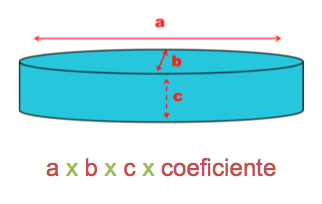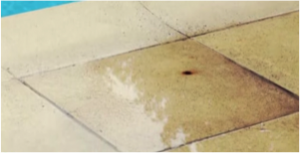Water has a wonderful virtue, which is to dissolve and mix an enormous amount of elements and substances … but this ability in the pools generates the obligation to watch it very closely so that what is produced in it is not harmful to The people or the facilities themselves. In this post we will see how to clean the pool.
Water has a wonderful virtue, which is to dissolve and mix a huge amount of elements and substances … but this ability in pools creates an obligation to monitor it very closely to what it occurs, is not harmful to the people or the facilities themselves. In this post we will see how clean the pool.
The maintenance pool most important is that of disinfection , but there are other aspects that must also be very present. For this purpose various control elements and treatment, whose dosage always requires, first, determine the volume of water contained in the pool are used. We will also recommend a series of activities to do to keep the water in your pool in perfect condition.
Therefore, criteria should consider choosing a product for the maintenance of your pool are: the volume of water in the pool water and what it looks like to fix and / or maintain.
- How to calculate the volume of water in your pool
- Types of maintenance for the pool
- Periodicity of the work pool
How to calculate the volume of your pool
The first thing you need to know to use the pool maintenance products is the volume of water containing your pool. This calculation depends on the shape and depth you have:
1. Determine the average depth
the maximum depth and the minimum depth is summed and divided by two.
2. Apply the formula according to the shape of the pool
To calculate the volume different formulas are applied according to the shape of the pool. If we take all measurements in meters, when multiply the result is in cubic meters. Remember that every cubic meter contains 1,000 liters of pool water.
- Square or rectangular pools: long is multiplied by the width and the average depth. If the pool has an “L”, you must be calculated as if they were two separate pools and then add both results. Example: If a pool is 6 m long, 3 meters wide and an average depth of 1.10 m, the result is: 6 x 3 x 1.10 = 19.8 m 3 = 19,800 liters

 Round or oval pools: the maximum length is multiplied by the maximum width and average depth. Then the resulting figure should be multiplied by a coefficient: 0.785 if a pool is round and 0.89 if a pool is oval . Example: an oval pool of 6 x 3 meters and an average depth of 1.10 m will be 6 x 3 x 1.1 x 0.89 = 17.62 m 3 = 17,620 liters
Round or oval pools: the maximum length is multiplied by the maximum width and average depth. Then the resulting figure should be multiplied by a coefficient: 0.785 if a pool is round and 0.89 if a pool is oval . Example: an oval pool of 6 x 3 meters and an average depth of 1.10 m will be 6 x 3 x 1.1 x 0.89 = 17.62 m 3 = 17,620 liters
Types pool maintenance
Here are the different types of maintenance for existing pool water, depending on the function to develop:
1. Regulation of PH
 The pH regulation is an essential factor in the pool. The pH is a measure of acidity on a scale from 0 to 14. Values below 7 acidity and ranging over 8 alkalinity. For the pool has the correct pH should be maintained between 7 and 7.8.
The pH regulation is an essential factor in the pool. The pH is a measure of acidity on a scale from 0 to 14. Values below 7 acidity and ranging over 8 alkalinity. For the pool has the correct pH should be maintained between 7 and 7.8.
To assess the rate of use pH equipment water analysis . If the result gives us is not correct, we must use a minorador or pH increaser, following the instructions to mark the product.
 2. Chlorination
2. Chlorination
Chlorination involves adding to water a chemical compound of chlorine serving as oxidant organics pool. There are different formulations containing this chlorine for pools :
– sodium hypochlorite
– calcium hypochlorite: less aggressive to the skin and also effective
– trichloro: (trichloroisocyanuric acid) supports better sunlight and does not alter the pH.
Chlorine can be supplied in shock treatments, which release a large amount of chlorine normally at the start of the season and treatments continued action, performing a progressive release of chlorine tablets or granular form following the instructions indicated by the manufacturer. Chlorine gets into the skimmer and in the case of collapsible swimming pools, in a floating buoy, so that no contact with plastic.
During the chlorination process, the level of PH must be between 7 and 7.8 . Outside these values, chlorination becomes less effective and can be aggressive to the skin and mucous membranes.
There are alternative to chlorine chemical treatments that are more expensive but they need not both proportioning control and nonirritating or odors. You can find more information about alternative treatments chlorine>
3. Antialgas
 The presence of algae shows a weakness of the disinfection system. Initially detected by the tone of water (most often it becomes a little greenish). In addition to good physical cleaning to remove algae from the bottom surfaces and walls, a shock treatment with a product will be necessary antifouling and washing the filter .
The presence of algae shows a weakness of the disinfection system. Initially detected by the tone of water (most often it becomes a little greenish). In addition to good physical cleaning to remove algae from the bottom surfaces and walls, a shock treatment with a product will be necessary antifouling and washing the filter .
Once the algae have appeared in a pool will be maintained continuously an algaecide to prevent their proliferation. There are treatments for it chlorine and lead combined.
4. flocculent
 When the water becomes turbid , of a whitish hue, we are facing a problem of excess material in suspension or in pools of very hard water, a high lime content. Once we ruled out a filtering problem or an excess of lime, water maintenance is to provide flocculant . This acts as a thickener suspended matter, causing it to sink to be absorbed by the bottom nozzle or when cleaning walls and funds is made.
When the water becomes turbid , of a whitish hue, we are facing a problem of excess material in suspension or in pools of very hard water, a high lime content. Once we ruled out a filtering problem or an excess of lime, water maintenance is to provide flocculant . This acts as a thickener suspended matter, causing it to sink to be absorbed by the bottom nozzle or when cleaning walls and funds is made.
5. ANTICAL
We called hard water to those having a high concentration of dissolved particles in suspension (more than 1,000 ppm -parts per million). They are measured with a specific analyzer for this function. Hinder hard water disinfection processes and regulation of PH and affect the smooth operation of purification equipment. Products used to combat limescale .
6. Fungicide
 The pool environment is subject to moisture and heat, so it is not surprising that fungi appear on certain surfaces. The use of footwear is always important, but it is worth using a fungicide to prevent the proliferation of these unwanted organisms may also be invasive in our skin.
The pool environment is subject to moisture and heat, so it is not surprising that fungi appear on certain surfaces. The use of footwear is always important, but it is worth using a fungicide to prevent the proliferation of these unwanted organisms may also be invasive in our skin.
7. invernaje and cleaning products
The products invernaje are added to the pool water during the winter and lengthen your life, preventing you have to change it or replace it . The ideal time for a cleaning of the surfaces that are exposed to is empty or when the pool low level. To do this we recommend using a descaling and polishing , for metal elements. Cleaning the waterline you can be performed using a degreaser .
Pool maintenance
Here we present a series of recommended activities to keep the pool water in perfect condition:
Analyzes the pH of the water and add the necessary to be maintained between 7.2 and 7.61 product. Daily
- Analyzes the level of chlorine (free residual chlorine). Set it to the necessary levels.
- Clean water surface of leaves, insects and other residues.
2. Weekly
- Clean the skimmers
- Clean walls and funds
- Do a backwash and clean the prefilter of the skimmer
- Replenish chlorine tablets and other maintenance.



